It’s easy to design a garden that’s only beautiful for a couple of months in the spring. Long blooming shrubs make a garden look spectacular throughout the growing season without requiring much effort.
We wanted to mention a couple of flowering shrubs whose blooms don’t last long enough for our purposes. We love viburnum’s white flowers in early to mid-spring and red berries in the summer and fall. Some varieties even have variegated leaves.
The vibrant azalea is another one of our favorites. However, its average bloom time is even shorter, at only a couple of weeks. Some varieties are reblooming, in that they flower a second time so that we can enjoy them more than once a year.
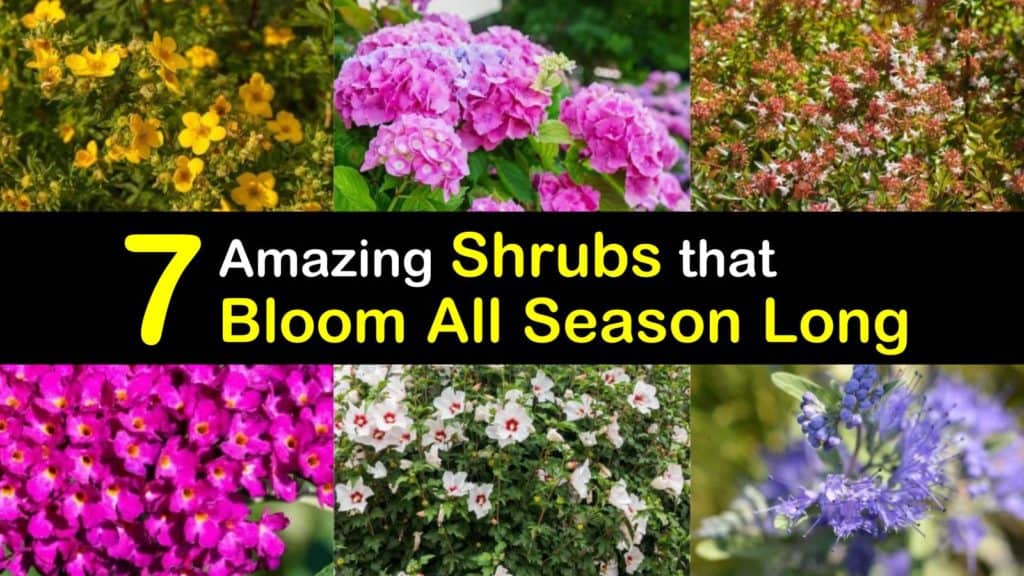
- Shrubs that Bloom All Season
- What are Shrubs?
- Where to Plant Long Blooming Shrubs
- How to Plant Shrubs
- Glossy Abelia (Abelia x grandiflora)
- Heavenly Blue Bluebeard (Caryopteris x clandonensis)
- Butterfly Bush (Buddleia davidii) – A Long Blooming Beauty
- Hydrangea (Hydrangea macrophylla)
- Spirea (Spiraea japonica)
- Shrubby Cinquefoil (Potentilla fruticosa) – A Cheery Long Blooming Shrub
- Rose of Sharon (Hibiscus syriacus)
Shrubs that Bloom All Season
The following plants bring long-term, low maintenance beauty and variety to your yard. If you mix a selection of these shrubs with your other plants, you’ll enjoy an attractive garden for the whole growing season. Knowing when to prune raspberry bushes and other shrubs will also help them to flourish.
Locate your bushes carefully when planning your garden landscape. How much sun do cranberry plants need? How much water should I give my plant and how often? Knowing the answers to these questions helps provide the best growing environment.
What are Shrubs?
It could seem basic, but it’s best to clear away any confusion. A shrub is a woody plant that’s smaller than a small tree. Shrubs also have several stems as opposed to one trunk. Types of shrubs include evergreen and flowering.
Where to Plant Long Blooming Shrubs
Where you plant bushes depends on the shrub’s type and your garden’s characteristics. Dwarf varieties are great for borders or small yards.
A large shrub can make a significant impact in a small space. In a larger garden, consider planting several varieties close together to create a shrubbery.

For something a little different, try growing shrubs in pots to mix in with those in the garden. The space can be rearranged whenever you like and provide a new perspective in the changing seasons.
How to Plant Shrubs
Dig a hole of the same depth as your pot but somewhat wider. Carefully remove the shrub from its container and place it in the hole, making sure that its root ball is level with, or even slightly above, the soil surface.
Gently loosen the roots with your hands. Scoop in the soil, then pack it lightly. Finish by watering your newly planted shrub well and laying a thick layer of mulch.
Glossy Abelia (Abelia x grandiflora)
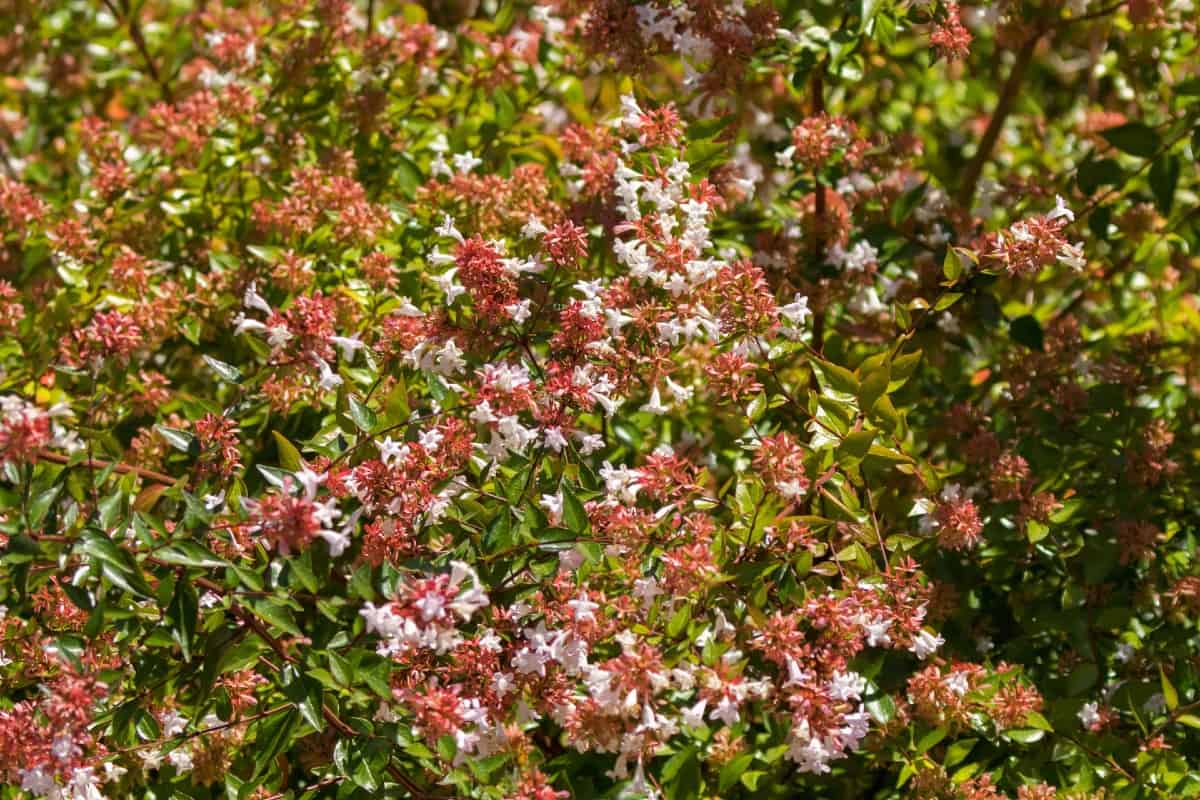
This shrub’s soft-colored blooms start in early summer and often last for months. These wildlife-friendly shrubs and trees are a magnet for hummingbirds and pollinators and have leaves that range from gold to burgundy.
Plant abelia in the spring or fall to avoid temperature extremes. Ideally, choose a spot with full sun, although this bloomer can also handle partial shade. Abelia does best in well-draining, slightly acidic, fertile soil.
In the early spring, apply a slow-release fertilizer for woody plants. Water your abelia plant every week or two during the summer and prune it lightly before new growth begins in the spring.
Heavenly Blue Bluebeard (Caryopteris x clandonensis)
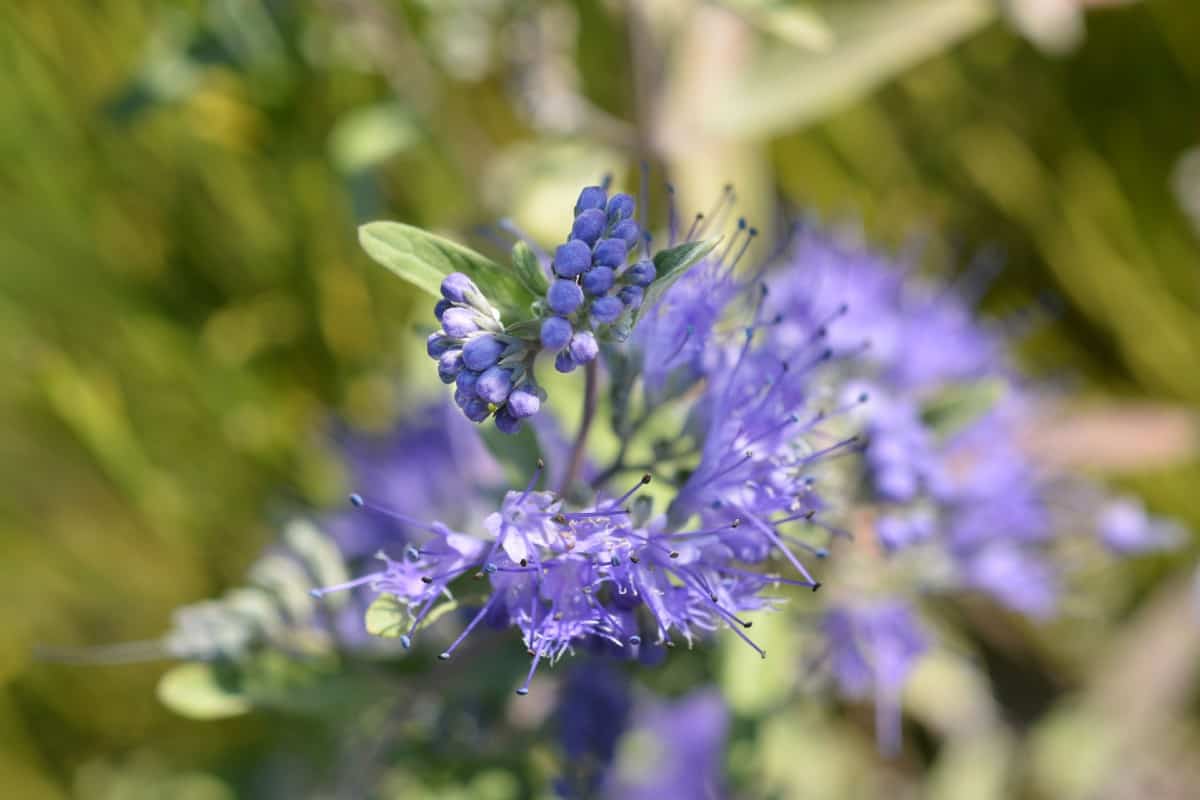
If you’d like to enjoy vivid blue flowers in late summer, bluebeard is the plant for you. This compact shrub’s blossoms make excellent cut flowers.
In the fall or spring, plant bluebeard in full sun in well-drained soil. If your shrub came in a pot, apply a flower fertilizer in the spring.
These hardy plants are drought resistant, so only water them a little once they have established themselves. Make sure to prune them dramatically in the early spring.
Butterfly Bush (Buddleia davidii) – A Long Blooming Beauty
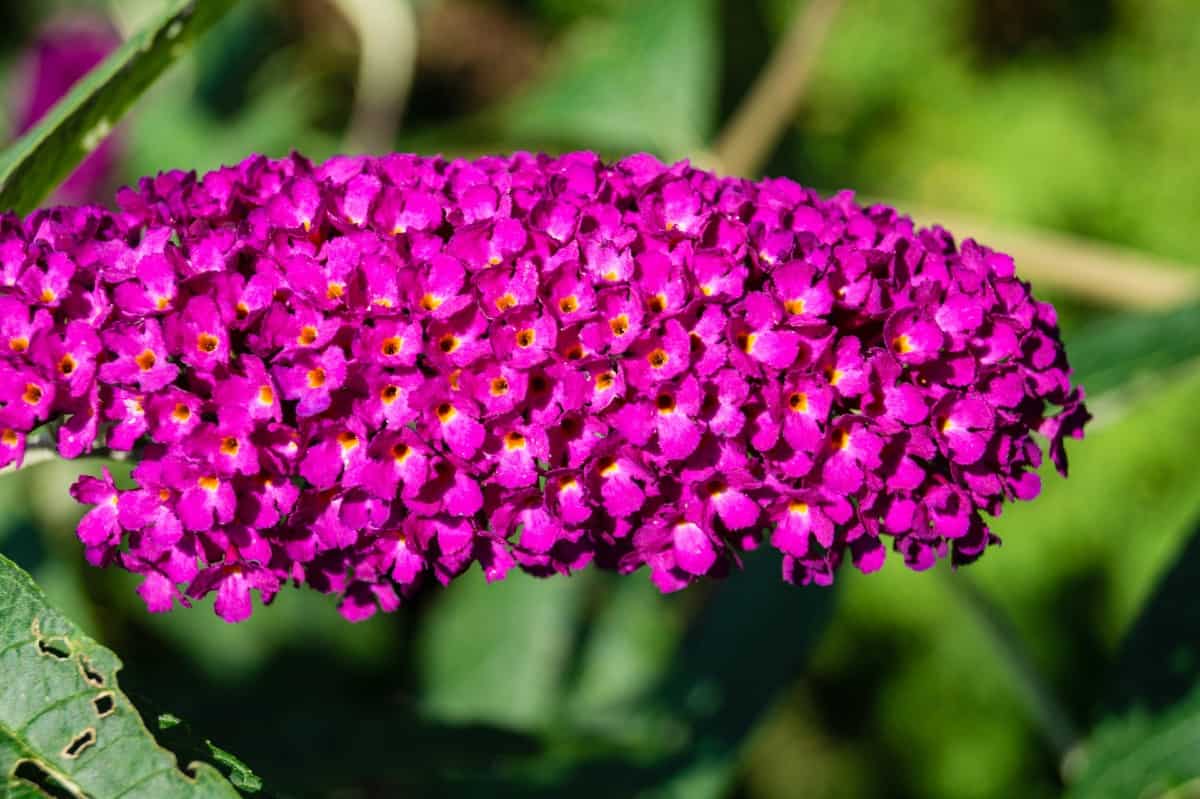
This shrub is like a lilac in having fragrant flowers that range from white to deep purple. However, the butterfly bush is invasive in many parts of the United States, so do your research before planting it. Deadhead in the fall to prevent the seeds from spreading.
These fast growing tall bushes should be planted in the spring or early fall in well-drained soil in full sun. In the spring, cut back the branches to the ground.
Don’t use any fertilizer on your butterfly bush so as not to encourage excessive leaf production. Only water it heavily when it’s actively growing.
Hydrangea (Hydrangea macrophylla)
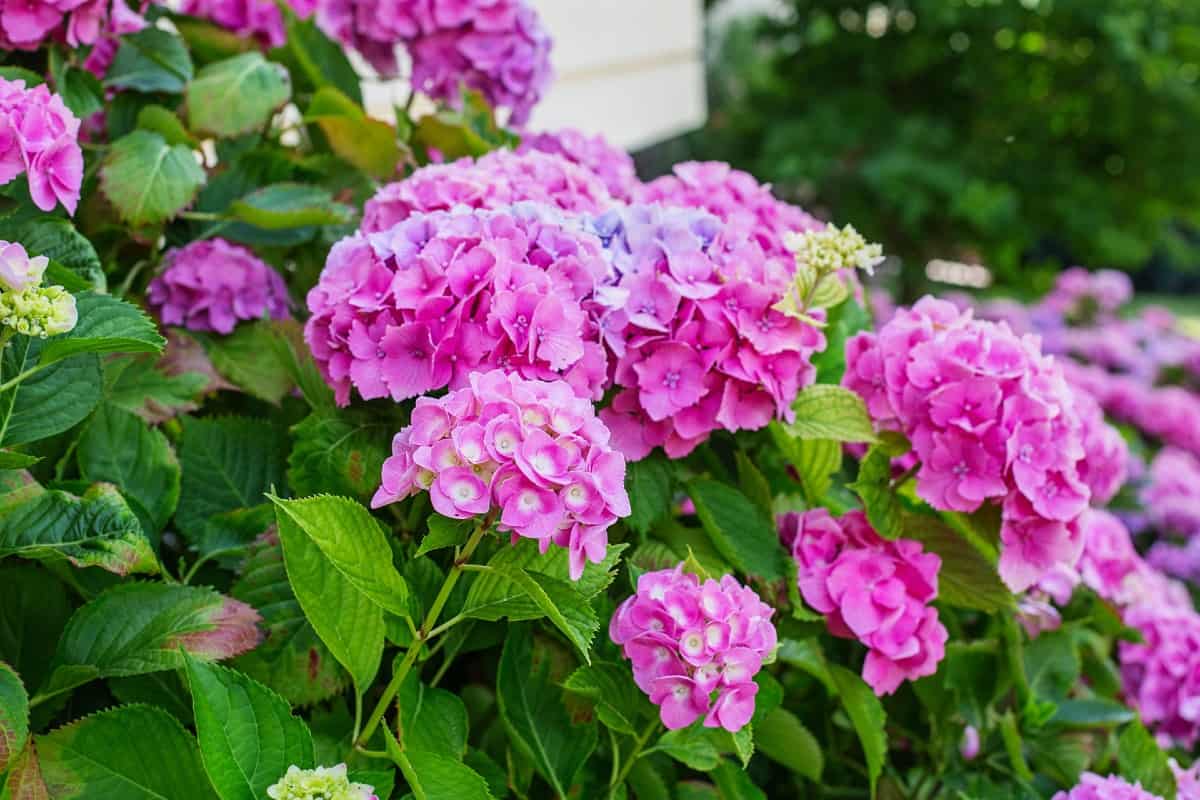
The hydrangea is one of the best known summer-blooming shrubs and is easily recognized by its big, bold flowers. Certain varieties shift between blue and pink flowers based on the soil’s pH. Panicle hydrangeas’ elongated white flower clusters, however, stay white.
Some species are evergreens with bright color and others are deciduous. Hydrangeas enjoy the partial shade rather than the bright sun. Plant your hydrangea in the fall or early spring in well-drained soil. Try to work in the early morning or late afternoon.
The appropriate fertilizer varies from one variety to another, but what is consistent across different hydrangeas is that they like to be soaked. Water your shrub three times a week, preferably in the morning.
Spirea (Spiraea japonica)
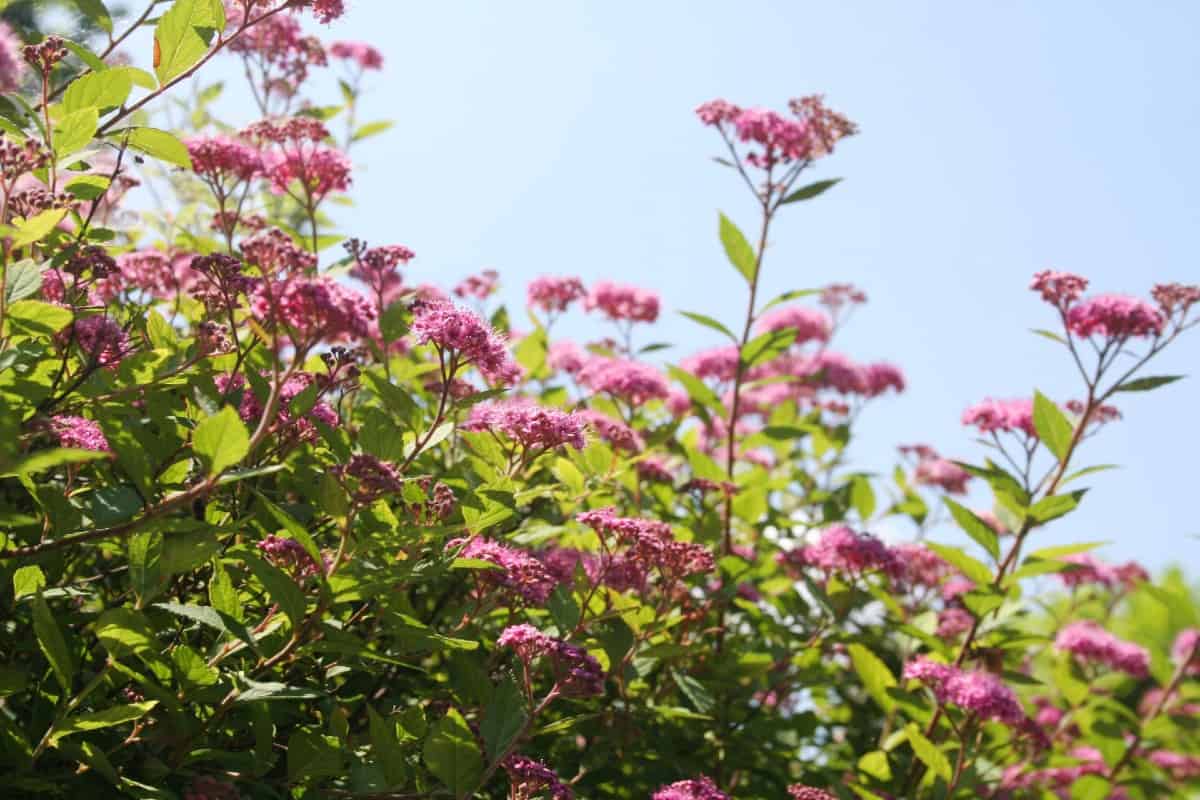
Besides its extended blooming period, a nice feature of the spirea is that it has several varieties. Although some traditional types get overly large, new varieties are more compact and are ideal small bushes for landscaping around the house.
This shrub has raspberry or white flowers. In the spring or fall, install a spirea plant in a spot with well-drained soil and full sun or partial shade.
Apply a controlled-release fertilizer in the spring. Once the shrub is securely established, only water it when the ground is dry, and avoid oversaturating it.
Shrubby Cinquefoil (Potentilla fruticosa) – A Cheery Long Blooming Shrub
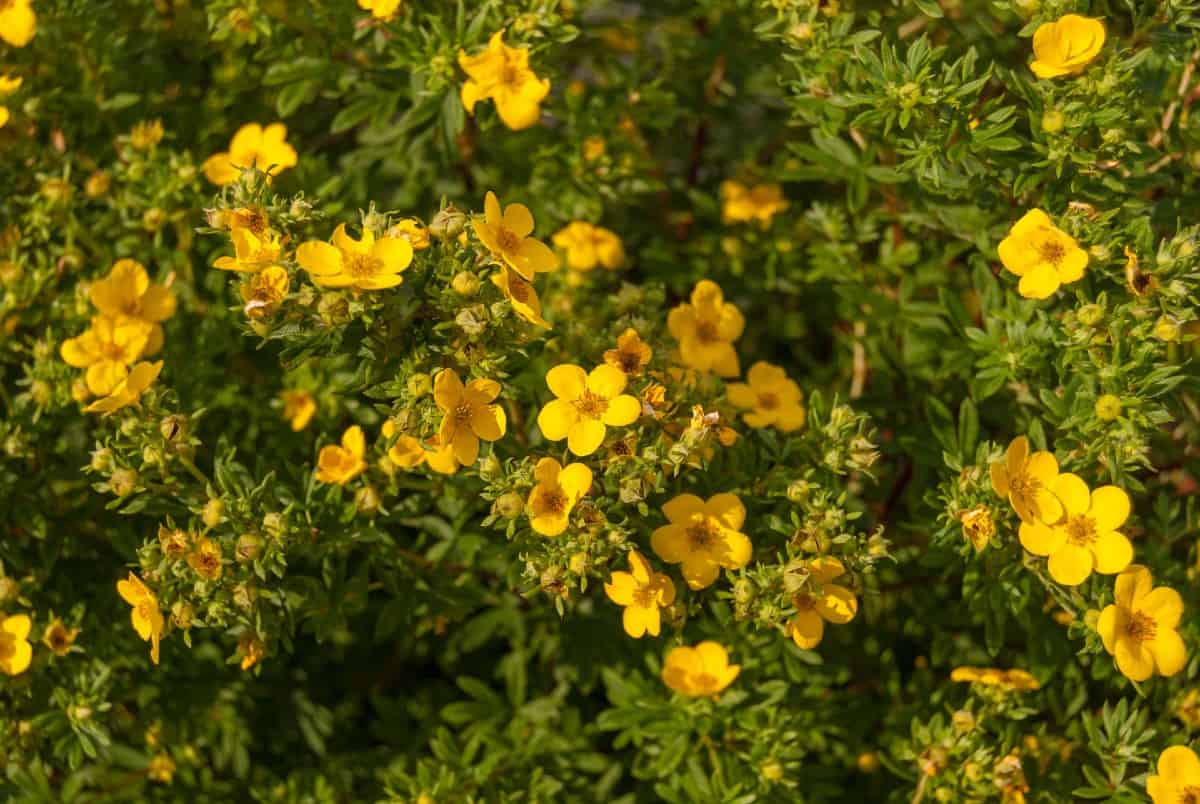
The flowers of sunny potentilla come in yellow, pink, white, and more. They emerge in late spring and last until the fall. This small shrub also produces an inedible fruit that resembles a strawberry.
Plant this hardy shrub in the fall or, preferably, the spring. Find a suitable location with well-drained soil and full sun or partial shade. During its first growing season, keep the cinquefoil moist by watering it once or twice a week during hot periods.
Add some compost or an all-purpose fertilizer in the spring, and use mulch to retain moisture. Carefully prune these easy perennials that bloom all summer in the early spring.
Rose of Sharon (Hibiscus syriacus)
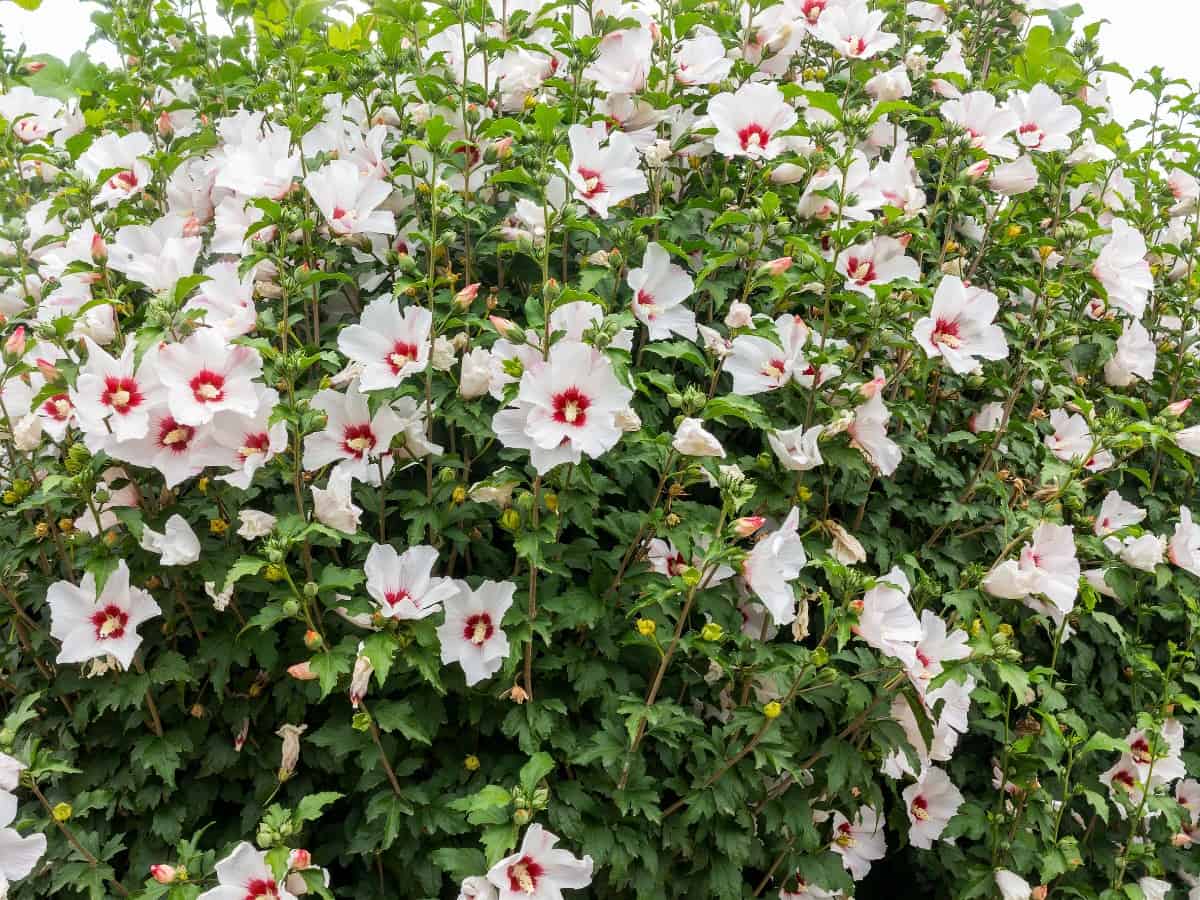
This spectacular shrub’s trumpet-shaped pink flowers emerge in late summer and continue into the fall. Rose of Sharon can also have lavender-blue or white flowers. Make the blooms more abundant by pruning lightly in the early spring.
Ideally, plant this shrub between November and March in fertile, well-drained soil in full sun. It’s a good idea to apply compost or a little fertilizer. Keep the soil moist, but make sure not to overwater to prevent the development of yellow leaves.
You now know about a variety of shrubs with extended bloom times. You’ll no longer have to deal with a garden that’s empty and lifeless by the fall or go to the effort of planting numerous annuals every year.
With long blooming shrubs that come in a range of sizes and blossom colors, it’s easy to find the ideal plant for your yard and situation. All you need to do is pick the shrub that appeals to you and get planting.
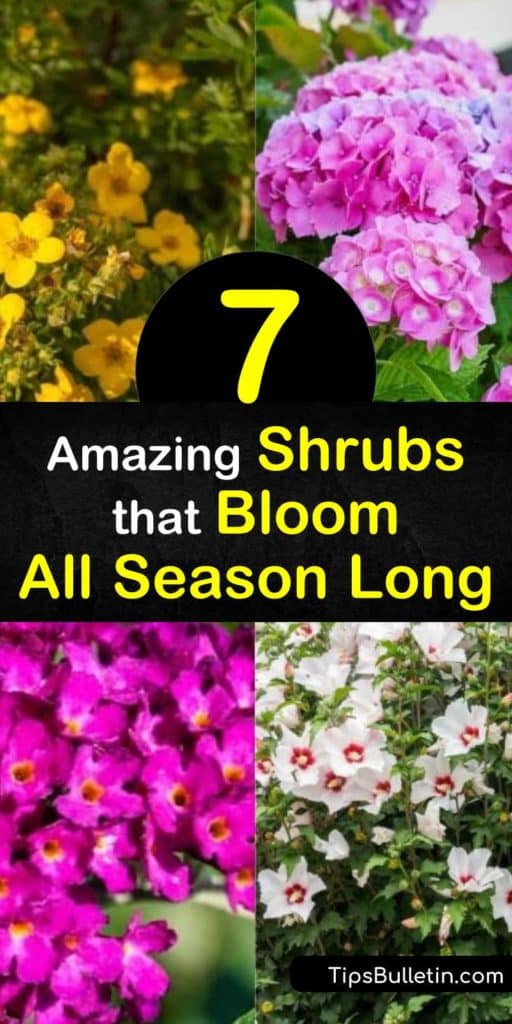
If you found this list of long blooming shrubs useful, please share these garden tips with your friends on Pinterest and Facebook.